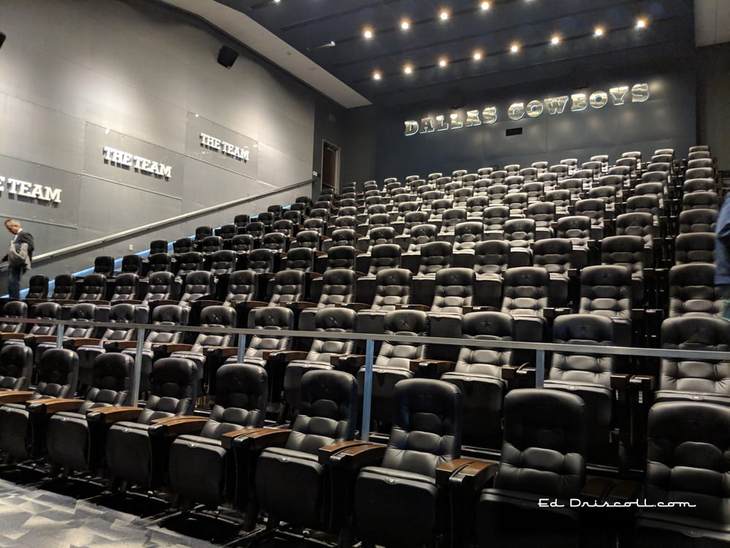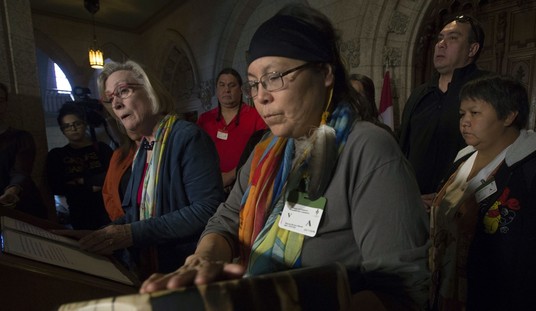Long before Skip Bayless became a controversial talking head on ESPN (and now Fox), he made his bones in the late 1970s and ’80s reporting on the Dallas Cowboys for the Dallas Morning News and the Dallas Times-Herald, culminating in his first book, 1990’s God’s Coach: The Hymns, Hype, and Hypocrisy of Tom Landry’s Cowboys. And there was much to report on. Tex Schramm, the team’s general manager, given near full-authority by Clint Murchison, the team’s rarely-seen owner, was a former PR man for the Los Angeles Rams in the 1950s. There were better teams in the 1970s – the ’72 Miami Dolphins went undefeated, and the Pittsburgh Steelers won four Super Bowl rings during the decade – but in the last years of the ‘70s, the Cowboys were omnipresent on network sports television. Not least of which because of their sexy showgirl-style cheerleaders, whom Schramm created the after observing that TV coverage of football games often paused on a pretty girl in the stands before going to commercials, Bayless writes:
A source says, “Tex knew some people would be adamantly opposed. Tom was never consulted. But Tex talked about how, when a network telecast went to commercial, the camera usually looked for a quick shot of a ‘honey’ in the stands. So Tex said, ‘Instead, the camera will spend five seconds on one of our girls on the sideline,’ which is exactly what started happening. Tex said, ‘That’s how we’ll build our image.’

The Star’s film room. George C. Scott as Patton, not included (Image credit: Ed Driscoll)
And how. The Cowboys sent posters of the cheerleaders to “every locker room of every college in the country,” Bayless writes. In 1979 and ’80, ABC, already the network of “jiggle television” with shows like Charlie’s Angels and Three’s Company, released two made-for-TV movies about the Dallas Cowboys Cheerleaders, and gave them appearances on the Love Boat. In 1981, Cowboys free safety Charlie Waters told Bayless, “Most football teams have cheerleaders. Our Cheerleaders just happen to have a football team.”
The Cheerleaders’ showgirl outfits and dance routines made for quite a contrast with their emotionally distant stone-faced head coach. Since their founding in 1960, the Cowboys were coached by Tom Landry, who had begun his pro career in the 1950s as a defensive back with the New York Giants, before becoming a defensive coach. While the head coach of the Giants for most of that decade was Jim Lee Howell, he delegated much of his authority to his defensive and offensive coordinators: Landry, and Vince Lombardi, respectively. In the 1970s, Landry, the last NFL coach to don a suit or sports jacket, tie, and snap-brim fedora (until Mike Nolan of the 49ers wore a suit in his honor in 2007), was the lynchpin to much NFL history. Landry was also a former WWII bomber pilot, and a devout Christian, making him a welcome throwback for millions to pre-“Me Decade” America.
And the 1970s were the transition decade for professional football, from a rag-tag league of semi-pro “head bangers” to a glittering technological update of the Roman Coliseum. This was largely the result of the PR savvy of Pete Rozelle, the NFL commissioner who helped the league replace baseball as America’s favorite professional sport. Bayless notes that “While Schramm was Rams P.R. director in 1952, he hired Rozelle as an assistant. Some said Rozelle remained Schramm’s assistant even as commissioner” — which could explain the Cowboys’ omnipresence on nationally-televised games during that period.
Thus, as then-Cowboys PR director Greg Aiello told Bayless, “there were a whole lot of ways to like the Cowboys. If you were religious, you could like Tom and tune out Tex and the Hollywood stuff. If you liked Cheerleaders and flashy uniforms, you could tune out Tom.”
On January 21, 1979, the Cowboys lost to the Pittsburgh Steelers in Super Bowl XIII, their last of five appearances in the Super Bowl under Landry. But, as Bayless writes, when NFL Films assembled their highlight reel for the Cowboys’ season, they went to then-Cowboys PR director Doug Todd with a choice of titles: “Cowboys Die Hard” or “America’s Team.” Todd thought it over, and said, “I didn’t like the idea of us dying. And besides, they had all this footage from around the league of people in other stadiums waving Cowboy pennants or wearing Dallas T-shirts.”
As Thomas “Hollywood” Henderson, a talented linebacker whose NFL career was shortened by his massive cocaine addiction, told Bayless:
“By mid-’ 79,” says Thomas Henderson, “the America’s Team concept had swept the country. It was mostly because of Tom Landry and his Christianity that the masses identified with the organization. That was the catalyst. But then came Tex Schramm’s genius of promoting America’s Team so that every patriot from places like Butte, Montana, stationed around the world would say, ‘That’s my team.’”
Says ex-linebacker D. D. Lewis, “What amazed me was that it was almost like we had won the Super Bowl. I still run into people who think we were the team of the ’70s, that we kept beating Pittsburgh.”
Before the 1980s were over, the monster they created would devour the Cowboys’ management, all of whom had bought into the press clippings created by their own hype machine: “Tom Landry: God’s Coach. Tex Schramm: Most Powerful Man in the NFL. Gil Brandt: Draftmaster,” Bayless writes.
God’s Vice President of Player Personnel
Arguably, the man who bought into his own legend the worst was by the Cowboys’ vice president of player personnel, Gil Brandt. Brandt made brilliant draft choices during the 1960s and most of the 1970s (including his legendary “Dirty Dozen” draft in 1975, which rebuilt the-then aging Cowboys, took them to their third Super Bowl appearance, and kept them competitive for the next decade. But in the second half of God’s Coach, Brandt emerges as the book’s de facto star, not least of which, for what Bayless describes as “The Deal:”
[Jerry] Jones may have felt as if he were upside down drinking margaritas when [former team owner H.R. “Bum”] Bright told him about The Deal. When Bright bought the team, he agreed to honor his friend Murchison’s agreement with Brandt. As Mrs. Gil Brandt became Mrs. Clint Murchison in 1975—ironically, the year of Brandt’s last great draft— Murchison promised Brandt lifetime security as the Cowboys’ personnel director. The Deal may have had a good deal to do with the Cowboys’ plunge through the ’80s.
“I agreed to honor that,” Bright says, “but I told Jerry he was under no obligation to do so.”
As Bayless alludes above, by the late 1970s, for a variety of reasons, Brandt was losing touch at his job:
Since Brandt had become the Draftmaster, [Larry] Bethea was his first major miss. The Flex hexed Bethea, who couldn’t seem to bury his ball-chasing instincts. [Bethea, a defensive lineman, would eventually commit suicide after washing out of the NFL and USFL.] The computer failed to probe his heart, which was big but soft. “A 255-pound sack of sugar,” I called Bethea in a column. Nice athlete. No football player. Bethea would be followed through the 1980s by Brandt specials who always made Cowboy fans say, “Who?” Again and again Brandt reached for guys who could do just about everything but play football: Second-rounder Aaron Mitchell in ’79, Howard Richards (first) and Doug Donley (second) in ’81, Rod Hill (first) and Jeff Rohrer (second) in ’82, Kevin Brooks (first) and Jessie Penn (second) in ’85.
* * * * * * * *
When you remember this franchise traded its first and second choice in 1980 for John Dutton, you realize the Cowboys played the ’80s with almost no fresh bullets. It was mostly Landry’s System versus the world, and the world began to win.
Whenever NFL dynasties fade, the reason is almost invariably an aging pool of talent and a lack of fresh bodies to replace them. Bayless’s book should be called “God’s Vice President of Player Personnel,” but that wouldn’t have the same ring to it on the cover — and wouldn’t have sold nearly as many copies. Not surprisingly, having made Brandt the main scapegoat for the Cowboys’ demise in the 1980s, in 2019, Bayless was shocked that his bête noire, the then-85-year-old Brandt became the last of the Cowboys’ original triumvirate to reach the NFL Hall of Fame.
Bum Bright: The Man Who Really Fired Tom Landry
Like Brandt, Landry emerges as an aging and stubborn figure: running the same offensive and defensive schemes he had coached since the dawn of the Cowboys, and looking the other way at the Cowboys’ growing drug issues and Brandt’s diminished skill at finding new players. Even after going 3-13 in 1988, at age 64, Landry believed that he could rebuild the Cowboys and take them into the 1990s. In 1984, Clint Murchison, with his real estate empire collapsing, sold the team to his virtual look-alike, H.R. “Bum” Bright, whom Schramm had wooed as a potential buyer. But a few years later, when Bright’s own fortune in banking and real estate collapsed, he would increasingly loathe Landry due to his aloof nature and inept play-calling during their strike-shortened season in 1987, when the team went 7-8:
Bright made his third and last visit to Cowboys Center, for the annual Christmas party. When he spotted Landry, he moved through the crowd toward him, with Schramm in close pursuit. Landry hadn’t helped matters with Bright by treating the owner as if he actually were invisible. Bright found Landry aloof and unapproachable. But Bright walked right up and said, a touch sarcastically, “Well, Tom, I guess you want me to give you a vote of confidence.” Bright remembers Schramm leading him away by the elbow before Landry could reply.
The following year, Bright began to court potential buyers to offload the team. Out of the blue, in early September 1988, 46-year old Arkansas-born oil “wildcatter” Jerry Jones woke up with a raging hangover at a vacation resort in Cabos San Lucas, opened up the Wall Street Journal, and read that the Cowboys were for sale. He called Salomon Brothers (yes, of Liar’s Poker fame; they were handling the investment details) and practically shouted into the poor phone connection, “You don’t know me, but my name is Jerry Jones and I’m going to buy the Dallas Cowboys.”
Landry’s fate was sealed.
Particularly when Jones told Bright that he wanted to bring in his former college roommate and Arkansas Razorback, Jerry Jones to be the head coach. Jones took the fall as “the man who fired Tom Landry,” but it was Bright who also wanted him gone. As Jones told the Dallas Morning News in 2014, he and Bright “had a list of about 20 items that remained to be resolved after we announced everything. And there were hundreds of details to still work out. I later asked Bum what would’ve happened if we weren’t able to agree and he said, ‘Sounds like I’d get me a new coach.’”
The Real God’s Coach
Eventually, in Bayless’s coda, he finds the real “God’s Coach,” Jerry Tubbs, who joined the Cowboys as an aging linebacker during the team’s early, expansion years, before coaching the position, until Jones bought the team. Bayless viewed him as everything Landry wasn’t:
Tubbs was my favorite person in the Cowboy franchise. You didn’t have to wonder if God was in Tubbs’s heart. You just felt it.
Whatever you believed or didn’t, Tubbs could make you feel better about the world. When I doubted, Tubbs helped revive my faith in a basic goodness. It was more what he did than what he said. You could see him do unto others and love his neighbor, but you didn’t hear him tell the media about it. He wasn’t a big drinker, smoker, cusser, carouser— or bragger.
* * * * * * * *
I never heard Tubbs blame a player, and I never heard a Cowboy bad-mouth Tubbs. I heard Cowboys knock every Landry assistant but Tubbs. Thomas Henderson loved Tubbs. All the players and ex-players quoted in this book said they respected Tubbs. Often Tubbs called players who had been cut to say how much he appreciated what they’d done for the team and told them to “stay in touch.” Quietly, Tubbs had a profound impact on many lives.
But what of Tom Landry himself? Upon being fired, Bayless writes that finally, “God’s Coach was free to become his image.” And what an image: NFL Films and the NFL Network continue to deify him, and after the comparatively brief run by Jimmy Johnson (a topic covered in Jeff Pearlman’s 2008 book, Boys Will Be Boys, which picks up where God’s Coach ends), the Cowboys have had little success in the playoffs, an area where Landry’s teams were a fixture for almost 20 years. Despite their playoff drought, Jerry Jones has built a football empire with a magnificent stadium, a glittering training facility with daily public tours, and endless merchandizing revenue. He couldn’t have done it without the legends – and legendary excesses – of Landry’s teams.
From Bauhaus to Jerry Jones’ House

Your humble narrator at the press conference room’s podium, auditioning to be Jason Garrett’s replacement. The similarity of the author’s hat in the right-hand corner to one of Tom Landry’s many fedoras is purely coincidental (Image credit: Ed Driscoll)










Join the conversation as a VIP Member